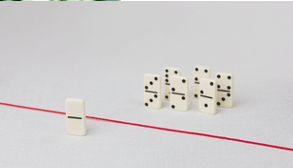Online Film School Free » Script Writing Class » The Story Conflict
The Story Conflict
Table of Contents
Toggle
Story conflict definition
A story conflict is a gap between what the protagonist of the story wants or needs, and the forces that prevent him from getting it. To build a story conflict, you need two forces that will work against each other. It’s a primary tool in every story that creates tension. The conflict will result at the end of the movie.
Why do we need the story conflict?
The conflict is the most crucial part of writing a script. It is the tool you use to help your main characters face their fears and all other emotional issues. By seeing how they react to the conflicts, we learn more about them and get to know them better. If a conflict reveals different sides of the characters that we didn’t know before, then our character is a good three dimensional one. It is also a tool that will help us to understand our story’s premise better.
Types of story conflicts

There are three levels of conflicts you can use in your movie:
- Inner conflict – The protagonist has a problem with himself and his morality. For example, he/she doesn’t want to rob a bank, but, on the other hand, he/she doesn’t have any money to feed his family. Fear and guilt can be good obstacles. Other good examples of inner conflicts can be sexual, religious, cultural, etc. Inner conflict is considered to be the most powerful one. It helps us to feel empathy towards our protagonist.
- Personal Conflict – This is an external conflict between the protagonist and a different character (or characters). The other character (or characters) will be the antagonist.
- Universal/social – The protagonist is against something huge like a hurricane, the government, etc. Sometimes the universal and personal conflicts will represent an inner conflict (as most conflicts should)
Finding out your story conflict and strengthening it
Identifying the central conflict in a movie can sometimes be a little tricky, but you have to do it, or you won’t be able to get very far.
The central conflict should be summarized in one sentence:
“The central conflict is between ___ (the main character) and ____ (the opposing forces).
If You have trouble defining that, then you need to investigate your story better.
Here is how to do it:
The questions you need to ask, to strengthen your story conflict:
- Who is our main character, and what is her goal? The main character’s goal is the first part of the conflict. What is it she is trying to achieve? You have to find what is the one thing they have to get. Your “character wants” is the fuel of your film, so put some thoughts into it. It has to be very strong. It has to be something that agrees with her beliefs and ideologies. Try to think even what is the character’s goal for after the film ends are. What do they want to have 30 years from now?
- The next question will be, what is stopping her from getting what she wants or need? There is a force that fights her. What is the motivation of this antagonist? Being a pure evil guy is not a good motive, and if you are using an inner conflict and the antagonist is the protagonist’s fear of talking to strangers, it can’t be just because that’s the way she is. It has to have some reason. Understanding that force will help you understand the obstacles that the protagonist needs to go through. Make sure that this antagonist is equal in power to the protagonist. Nobody wants to see a fight between a lion and an ant- We know who will win right at the start.
- The third question is: What is at stake? If the protagonist won’t get what he wants, is there something he might lose? Is it something worth fighting for? Understanding what’s at stake is the answer to the question, why is it that our hero doesn’t give up?
Every conflict that the main character is dealing with, should also represent something bigger that is at risk for the character. For example, characters can have a moral conflict, but if they lose, the stakes are high that they might join to the evil army, so it make the conflict even stronger.
Building a conflict up to the climax
We now agree that every good story needs a conflict, but your conflict needs to grow and develop throughout the film. The sooner you’ll bring in the conflict (as a very small one at the start), the better it will be for your movie. If you don’t want to start the conflict right at the beginning, it can also be useful to insert some subtle clues and hints to the upcoming conflict. The conflict will grow with obstacles that get harder and harder to overcome into a point where everything that gained might be lost if the protagonist won’t win this last obstacle. That point is called the climax. The climax usually will reveal to us in what way the hero has changed.
Use conflict everywhere you can
Every scene needs to have a conflict in it, and every time you show a conflict in a scene, you need the audience to care about the outcome.
After you set the goal of your character, try to see what the character wants to achieve in every action it acts, in every scene. The character may say to its daughter not to go to the party because it’s dangerous, but what she wants might be for her daughter not to grow up, so she will not feel she is getting old.
Look for the main character goal in everything she does and says and then look for what is the force that works against this small goal.



